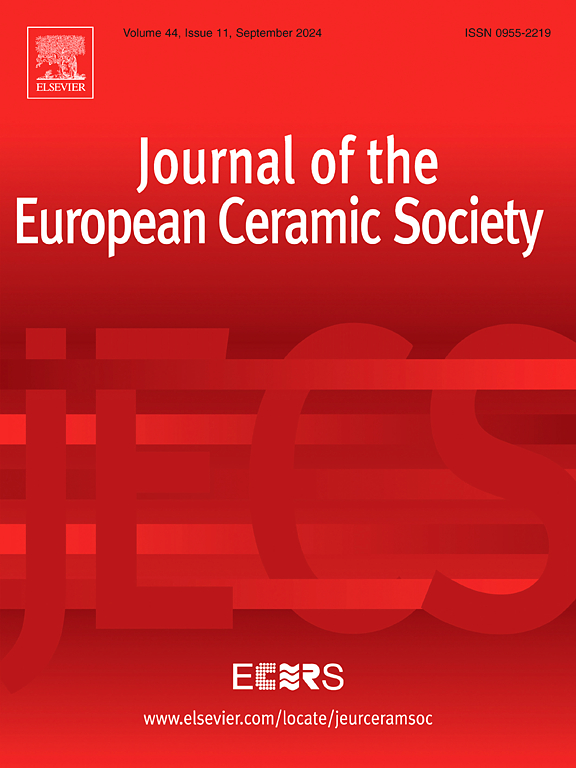Coaxially 3D-printed ceramic scaffolds for thermal energy storage applications
IF 6.2
2区 材料科学
Q1 MATERIALS SCIENCE, CERAMICS
Journal of The European Ceramic Society
Pub Date : 2025-05-13
DOI:10.1016/j.jeurceramsoc.2025.117531
引用次数: 0
Abstract
This work deals with the development of thermal energy storage (TES) materials with improved performance by direct ink writing (DIW) of highly porous (85 % total porosity) 3D coaxial ceramic supports for the encapsulation of phase change materials. These supports consist of rods with a boron nitride/vermiculite (77/23 by volume) composite core and a vermiculite shell. The approach is based on introducing a highly thermally conductive core into the filaments to improve the efficiency of the 3DTES structures, while maintaining a highly porous clay shell with a reported ability to be infiltrated by sodium nitrate and solar salt. A comparative study of the TES performance is conducted evaluating the thermal energy storage efficiency, thermal stability, energy storage density, and thermal conductivity. As demonstrated by finite element simulations, the enhanced thermal response of the coaxial 3DTES can be attributed to a multi-layered configuration of the filaments, also responsible for the increased anisotropy.
用于热能储存应用的同轴3d打印陶瓷支架
这项工作涉及热储能(TES)材料的开发,该材料通过直接墨水书写(DIW)提高了高孔隙度(85% %总孔隙度)3D同轴陶瓷支架的性能,用于封装相变材料。这些支架由氮化硼/蛭石(77/23体积)复合芯和蛭石壳组成。该方法是基于在细丝中引入高导热芯,以提高3DTES结构的效率,同时保持高多孔性粘土壳,具有被硝酸钠和太阳能盐渗透的能力。对TES的储热效率、热稳定性、储能密度和导热系数进行了对比研究。有限元模拟表明,同轴3DTES的热响应增强可归因于细丝的多层结构,这也导致了各向异性的增加。
本文章由计算机程序翻译,如有差异,请以英文原文为准。
求助全文
约1分钟内获得全文
求助全文
来源期刊

Journal of The European Ceramic Society
工程技术-材料科学:硅酸盐
CiteScore
10.70
自引率
12.30%
发文量
863
审稿时长
35 days
期刊介绍:
The Journal of the European Ceramic Society publishes the results of original research and reviews relating to ceramic materials. Papers of either an experimental or theoretical character will be welcomed on a fully international basis. The emphasis is on novel generic science concerning the relationships between processing, microstructure and properties of polycrystalline ceramics consolidated at high temperature. Papers may relate to any of the conventional categories of ceramic: structural, functional, traditional or composite. The central objective is to sustain a high standard of research quality by means of appropriate reviewing procedures.
 求助内容:
求助内容: 应助结果提醒方式:
应助结果提醒方式:


